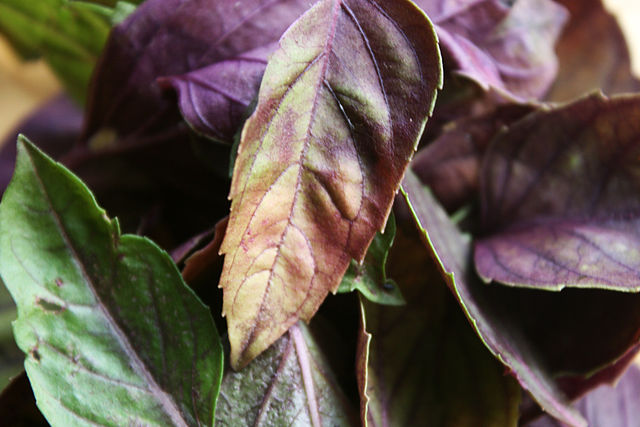Why Are My Basil Leaves Turning Black
Basil, with its fragrant leaves and versatile culinary uses, is a beloved herb in gardens and kitchens around the world. However, even the most experienced gardeners may encounter issues with their basil plants, such as the troubling phenomenon of black leaves. Understanding the underlying causes behind this occurrence is essential for maintaining the health and vitality of your basil plants.
Understanding Basil Plants
Before delving into the specifics of why basil leaves may turn black, it’s crucial to have a solid understanding of basil plants and their requirements. Basil, scientifically known as Ocimum basilicum, is a member of the mint family and is prized for its aromatic foliage and flavorful leaves. This herb is native to tropical regions of Asia and Africa but is now cultivated globally for its culinary and medicinal properties.
To thrive, basil plants require specific growing conditions. They prefer well-draining soil with a pH level between 6.0 and 7.0 and thrive in locations with ample sunlight and warmth. Basil is sensitive to cold temperatures and should be protected from frost, making it best suited for cultivation in temperate to tropical climates. Additionally, there are numerous varieties of basil available, each with its own unique flavor profile and growth habits, including sweet basil, Thai basil, and lemon basil.
Causes of Black Basil Leaves
Black leaves on basil plants can be attributed to a variety of factors, ranging from environmental stressors to nutrient deficiencies and pest infestations.
Environmental factors play a significant role in the development of black basil leaves. Excessive exposure to sunlight, especially during the hottest part of the day, can scorch the leaves and cause them to turn black or brown. Similarly, sudden temperature fluctuations, such as rapid drops in temperature at night, can stress the plants and lead to leaf discoloration. Additionally, inadequate humidity levels, especially in dry or arid climates, can result in leaf desiccation and blackening.
Nutrient deficiencies are another common cause of black basil leaves. Basil plants require a balanced supply of essential minerals, including nitrogen, phosphorus, and potassium, for healthy growth and development. A lack of these nutrients in the soil can manifest as blackened or discolored leaves, along with stunted growth and poor overall health. Imbalances in soil pH, such as overly acidic or alkaline conditions, can also affect nutrient availability and uptake, leading to leaf problems.
Pests and diseases pose a third threat to basil plants, with various insects and pathogens capable of causing damage to the leaves. Common pests that affect basil include aphids, spider mites, and whiteflies, which feed on the plant sap and weaken the foliage. Fungal diseases such as downy mildew and bacterial infections like basil blight can also lead to blackening of the leaves, along with wilting and necrosis. Implementing preventive measures such as proper sanitation and regular inspection can help minimize the risk of pest and disease infestations.
Remedies and Prevention
Addressing the underlying causes of black basil leaves requires a combination of remedial actions and preventive measures tailored to the specific needs of the plants.
Environmental adjustments are often the first step in remedying blackened basil leaves caused by environmental stressors. Providing adequate shade during the hottest part of the day and protecting the plants from extreme temperature fluctuations can help prevent leaf scorching and discoloration. Maintaining optimal humidity levels by misting the plants or using a humidifier can also help prevent leaf desiccation and blackening, especially in dry or arid climates.
Nutrient management is essential for addressing black basil leaves caused by nutrient deficiencies. Conducting a soil test to assess nutrient levels and pH can help identify any imbalances that need to be corrected. Amending the soil with organic matter such as compost or well-aged manure can improve soil structure and fertility, while balanced fertilization with a complete fertilizer can provide the necessary nutrients for healthy growth. Mulching around the base of the plants can also help conserve moisture and suppress weeds, promoting overall plant health.
Pest and disease control measures are crucial for preventing black basil leaves caused by infestations and infections. Regular inspection of the plants for signs of pests or disease symptoms allows for early detection and intervention. Implementing natural remedies such as insecticidal soap or neem oil can help control common pests without harming beneficial insects or the environment. Additionally, practicing good garden hygiene by removing and disposing of infected plant material and avoiding overhead watering can help prevent the spread of diseases and minimize the risk of recurring issues.
Conclusion
In conclusion, black leaves on basil plants can be indicative of various underlying problems, including environmental stressors, nutrient deficiencies, and pest infestations. By understanding the causes of leaf blackening and implementing appropriate remedial measures and preventive strategies, growers can effectively manage this issue and maintain the health and vigor of their basil plants. With proactive care and attention to detail, you can ensure that your basil continues to thrive and provide bountiful harvests of fragrant leaves for culinary delight.



